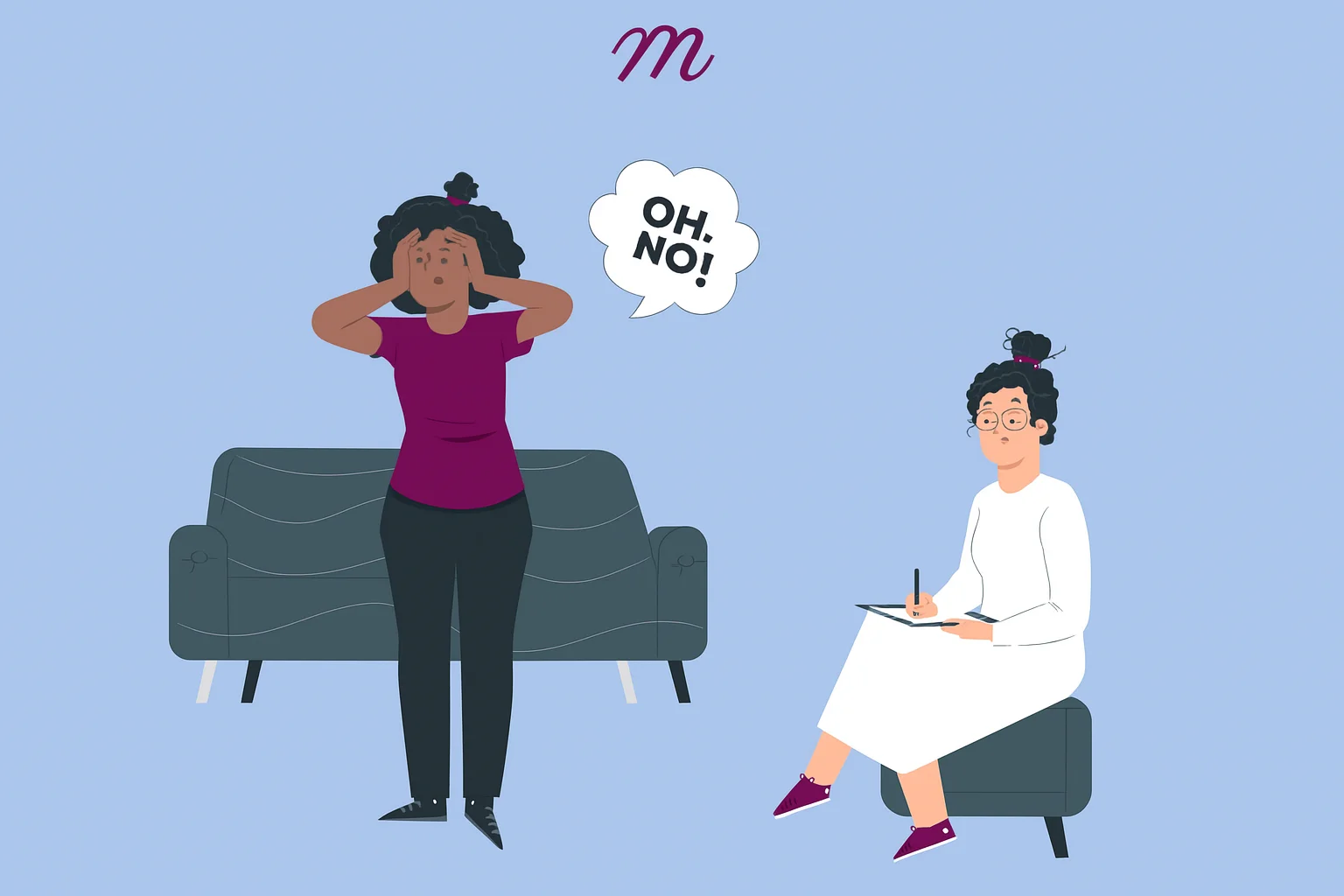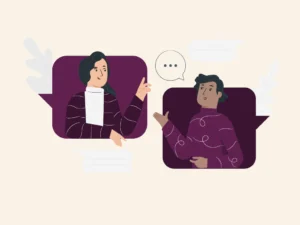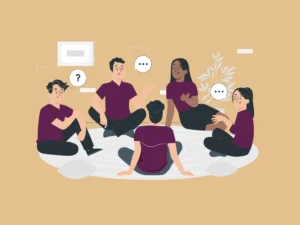A rupture in therapeutic alliance refers to a breakdown or strain in the collaborative and affective bond between a therapist and client. These moments can interrupt progress and may stem from misunderstandings, unresolved transference, therapist error, or broader interpersonal dynamics.
Ruptures can be seen not as failures, but as opportunities for growth, when approached with curiosity and openness.
When I started as a therapist two years ago, nobody warned me about how personally challenging ruptures in the therapeutic relationship would be. I had all the theoretical knowledge from grad school, but nothing prepared me for that sinking feeling when a client looks you in the eye and says, “I don’t see the point of therapy.”
That happened to me about 2 months in with a client I thought was making progress. Mid-session, he just dropped that bomb. My stomach instantly knotted up. Instead of giving him space to elaborate (which I now know would have been the more appropriate move), I launched into this nervous, defensive explanation of therapy’s benefits. I listed research studies, talked about long-term outcomes—basically everything except actually listening to what he was trying to tell me. By the time I stopped rambling, the moment was gone, and so was the opportunity to understand what was really going on for him.
That moment still makes me cringe when I think about it. But it taught me something crucial that my textbooks never did.
The Reality of the Therapeutic Alliance
We talk about the therapeutic alliance like it’s this stable thing—something you establish early and then it’s just… there. But my experience has shown it’s way messier than that. It’s constantly shifting. Some days it’s strong, and then suddenly it’s shaky for reasons you can’t immediately identify.
Once in my supervision, I finally admitted how annoyed I’d become with a client who texted me 2–3 reminders on session days. “Just making sure we’re still on for 3pm!” followed by “See you at 3!” Each ping made me more irritated. In my head I’d think, “Yes, I’m a professional. I have a calendar. I don’t need multiple reminders for a standing appointment.”
My supervisor asked a question that stopped me cold: “What do you think those texts mean to your client?” I hadn’t considered that these weren’t actually about my competence, but about her anxiety around abandonment. My annoyance was getting in the way of seeing what was really happening.
These ruptures are where the real work happens. But they’re also where I’ve felt most lost as a new therapist.
Two Types of Ruptures in Therapeutic Alliance
In the literature, ruptures are typically categorized into two types:
1. Confrontation Ruptures
Where the client directly expresses dissatisfaction with the therapist or therapy process.
- These often include verbal expressions like “I don’t feel heard” or “This isn’t helping.” They may involve a challenge to the therapist’s competence, direction of therapy, or emotional attunement.
- According to Safran and Muran (2000), confrontation ruptures tend to activate the therapist’s defensiveness, which can lead to escalation if not recognised and managed.
2. Withdrawal Ruptures
Where the client subtly disengages, becoming compliant, emotionally distant, or avoiding deep conversation.
- Withdrawal can manifest through passivity, avoiding difficult topics, excessive agreement, or reduced emotional expression. Clients may nod along without truly engaging or shift into surface-level discussions.
- These ruptures are often harder to spot, and therapists must attend to shifts in tone, affect, and interaction style. According to the APA’s supervisory guidelines, silence, sudden politeness, or flattening of emotion are common withdrawal cues.
Safran and Muran (2000), emphasize that both types of rupture in therapeutic alliance are embedded within the relational dynamics of therapy, often reflecting deeper attachment patterns. Confrontation ruptures may reflect a client’s fear of abandonment through anger, while withdrawal ruptures may reflect a fear of engulfment or retaliation.
Ways to Spot a Rupture
In my limited experience, I’ve noticed ruptures tend to show up in two ways:
The Direct Challenge
Some clients will just tell you something’s wrong:
- “This isn’t working for me.”
- “I don’t think you understand my situation at all.”
- “I feel worse after our sessions, not better.”
That client who questioned therapy’s purpose was doing me a favor with his directness, even though it didn’t feel like it at the time. He was giving me valuable information—I just wasn’t ready to hear it.
The Quiet Withdrawal
Then there are the subtle signs that something’s off:
- The client who suddenly starts arriving late
- The person who used to dive deep but is now giving superficial responses
- The shift from emotional sharing to intellectual discussion
- Session after session of “everything’s fine” when it clearly isn’t
As therapists we tend to miss these cues entirely with an early client.
Understanding your Triggers as a Therapist
Looking back at my mishaps, certain therapeutic situations consistently trigger me –
- When clients question the process. That “what’s the point” moment activated all my insecurities as a new therapist. I’ve since learned to breathe first, then get curious rather than defensive.
- When clients need excessive reassurance. Those multiple session reminders pushed my buttons around being respected as a professional. I’m learning this is often more about the client’s past experiences than my competence.
- When therapy stirs up my own unresolved issues. One client’s description of workplace bullying hit uncomfortably close to my own experiences, and I found myself overidentifying rather than maintaining a helpful perspective.
- When cultural differences create misunderstandings. A client from a different cultural background interpreted my questions about his family as intrusive rather than supportive, creating tension I initially missed completely.
How to Repair Rupture in Therapeutic Alliance
Repairing ruptures involves acknowledging the rupture, exploring the client’s perspective without defensiveness, and rebuilding safety. Key steps include:
- Recognise and name the rupture – Invite the client to reflect: “I noticed a shift in our sessions. I wonder how you’re feeling about our work together.”
- Regulate yourself first – Therapists must manage their own emotional responses to avoid acting from defensiveness or shame.
- Listen actively and validate – Don’t jump to fixing. Listen deeply.
- Take accountability where needed – Even small moments of misattunement can be acknowledged.
- Collaboratively re-establish goals and alignment – Realignment is often what builds trust after a rupture.
Repair is not a single conversation but an ongoing invitation to be transparent and attuned. Repairing ruptures successfully can actually strengthen the alliance and lead to deeper therapeutic work.
What Actually Works When Things Go Sideways
1. Just name it
My best repair moments have started with simple acknowledgment:
“Something feels different in the room today. Have I missed something important?”
or
“I’m sensing some tension between us. Should we talk about that?”
- This technique aligns with the practice of “metacommunication,” a core repair skill encouraged in rupture-repair training (Safran & Muran, 2000). Naming the tension helps externalize it as a shared problem, rather than internalizing it as personal failure.
- Therapists must learn non-accusatory language to open up space for collaborative reflection.
2. Take a breath before responding
When that client questioned therapy’s value, my immediate anxiety response made me talk AT him instead of WITH him. Now I try to pause, breathe, and get curious.
- The literature emphasizes therapist self-regulation as key in rupture moments. According to Rula’s therapist support guidelines, unregulated therapist reactivity—such as overexplaining or becoming defensive—can intensify rupture.
- Mindful self-awareness, slowing down, and staying in a stance of curiosity rather than control increases the likelihood of successful repair.
3. Accept that ruptures are inevitable
This has been the hardest lesson. I used to think ruptures meant I was failing as a therapist. Now I see them as essential parts of the work.
- Research shows that rupture and repair are not signs of a weak alliance—but of an active and evolving one. In fact, successful repair is one of the strongest predictors of positive treatment outcomes (Safran, Muran & Eubanks, 2011).
- Therapists who normalise rupture as part of the process are better positioned to model resilience, trust, and emotional attunement.
4. Remember it is not personal
Those session reminders weren’t a comment on my professionalism—they were about my client’s needs and past experiences.
- Many client behaviours are shaped by prior attachment wounds, trauma, or relational ruptures. Therapists must work to depersonalise these behaviours and instead explore their meanings within the client’s internal world.
- As the Therapeutic Alliance framework reminds us, interpreting rupture behaviour through the lens of client safety-seeking (e.g., seeking control, avoiding shame, testing trust) is key to empathic response.
My most successful repairs have happened when I:
- Noticed my own emotional reaction without immediately acting on it
- Got genuinely curious about what was happening for the client
- Made it safe for them to be honest with me
- Used the rupture as information about the client’s broader relationship patterns
What I Wish I Had Known Two Years Ago
If I could go back and whisper in my ear during those first shaky months of practice, I’d say:
- “The moments that make you most uncomfortable are often the most important.”
- “Your ruptures will teach you more than your successes.”
- “When a client triggers your insecurity or annoyance, that’s valuable information—about both of you.”
- “Perfect attunement isn’t the goal; repair is where the healing happens.”
- And most importantly: “You’re going to mess up, repeatedly, and that’s not just okay—it’s necessary.”
Conclusion
Every clinical rupture has humbled me and expanded my capacity as a therapist. That client questioning therapy’s value? He stayed for another month after we finally had an honest conversation about his concerns. The reminder-sending client? She gradually needed fewer reassurances as our trust deepened.
These messy, uncomfortable moments haven’t been deviations from the therapeutic process—they’ve been the process itself. And while I still have so much to learn, I’m gradually getting more comfortable in the discomfort, more curious than defensive, more willing to be wrong in the service of getting it right eventually.
Because ultimately, this work isn’t about being perfect. It’s about being human enough to help another human find their way through.
Resources
References
Rula. (2024, June 13). Responding to Ruptures in the Therapeutic Alliance. Rula Therapist. https://therapistsupport.rula.com/hc/en-us/articles/24548839051803-Responding-to-Ruptures-in-the-Therapeutic-Alliance
Rupture repair. (n.d.). CENTER for ALLIANCE-FOCUSED TRAINING. https://www.therapeutic-alliance.org/rupture-repair.html
Safran, J. D., & J Christopher Muran. (2000). Negotiating the therapeutic alliance: A relational treatment guide. Guilford Press.
Soundermind. (2025). Therapeutic Alliance: Why It Is Critical to Treatment Success |
SonderMind. Sondermind.com. https://www.sondermind.com/resources/clinical-resources/therapeutic-alliance
Why other mental health professionals love Mentalyc

“It’s really giving me some good confidence … and areas of improvement to see nuances I didn’t see before.”

“It keeps me on a level of assessment about the relationship that has a little bit more objectivity … helps keep me grounded.”

“There is a lot more feedback and suggestions in it than before … that makes things a little bit easier for me.”

“Reading transcripts helps me tighten up and come across more the way I want to present myself to clients … it’s helped me improve and keep getting better.”
Licensed Marriage and Family Therapist







